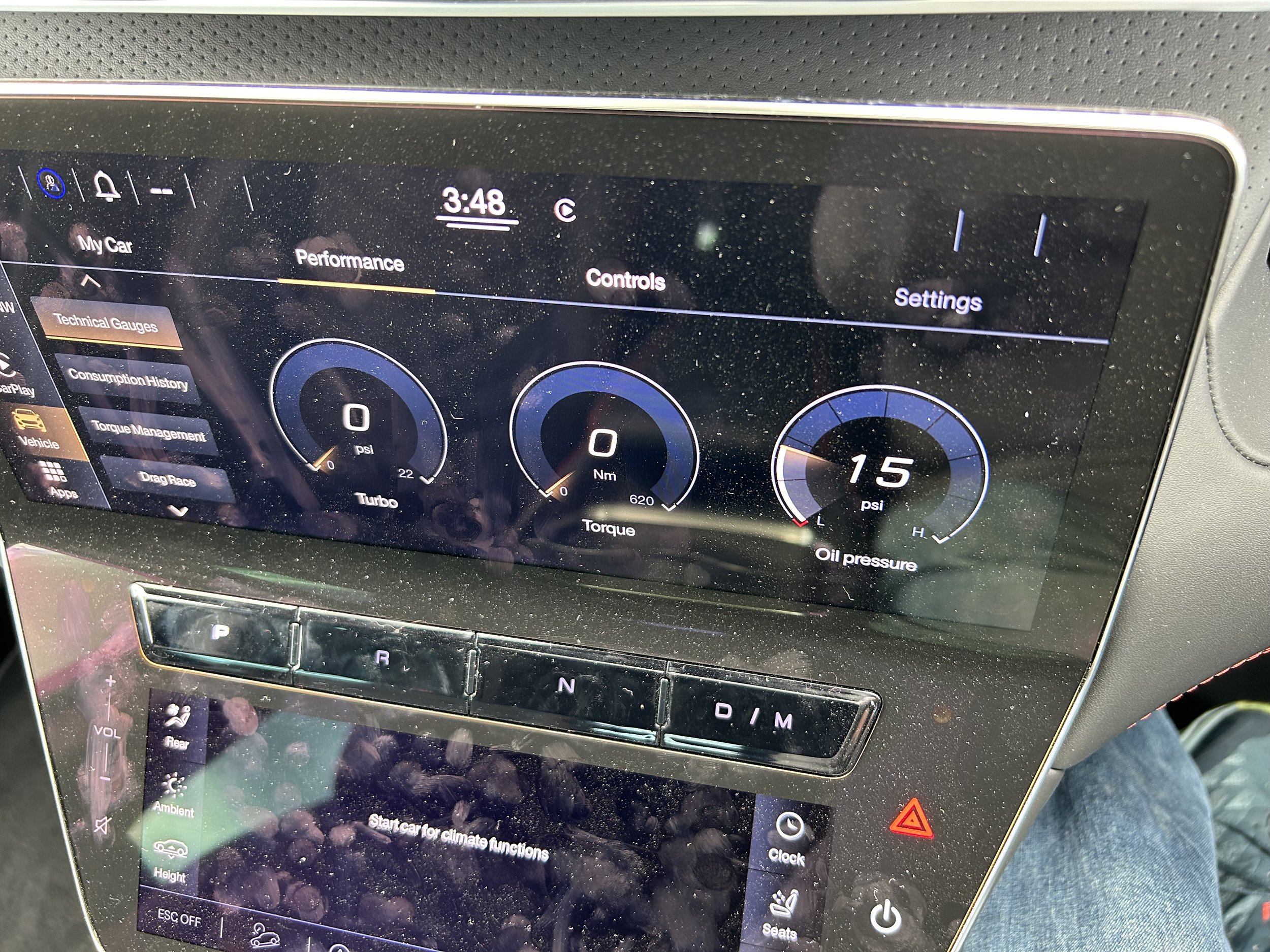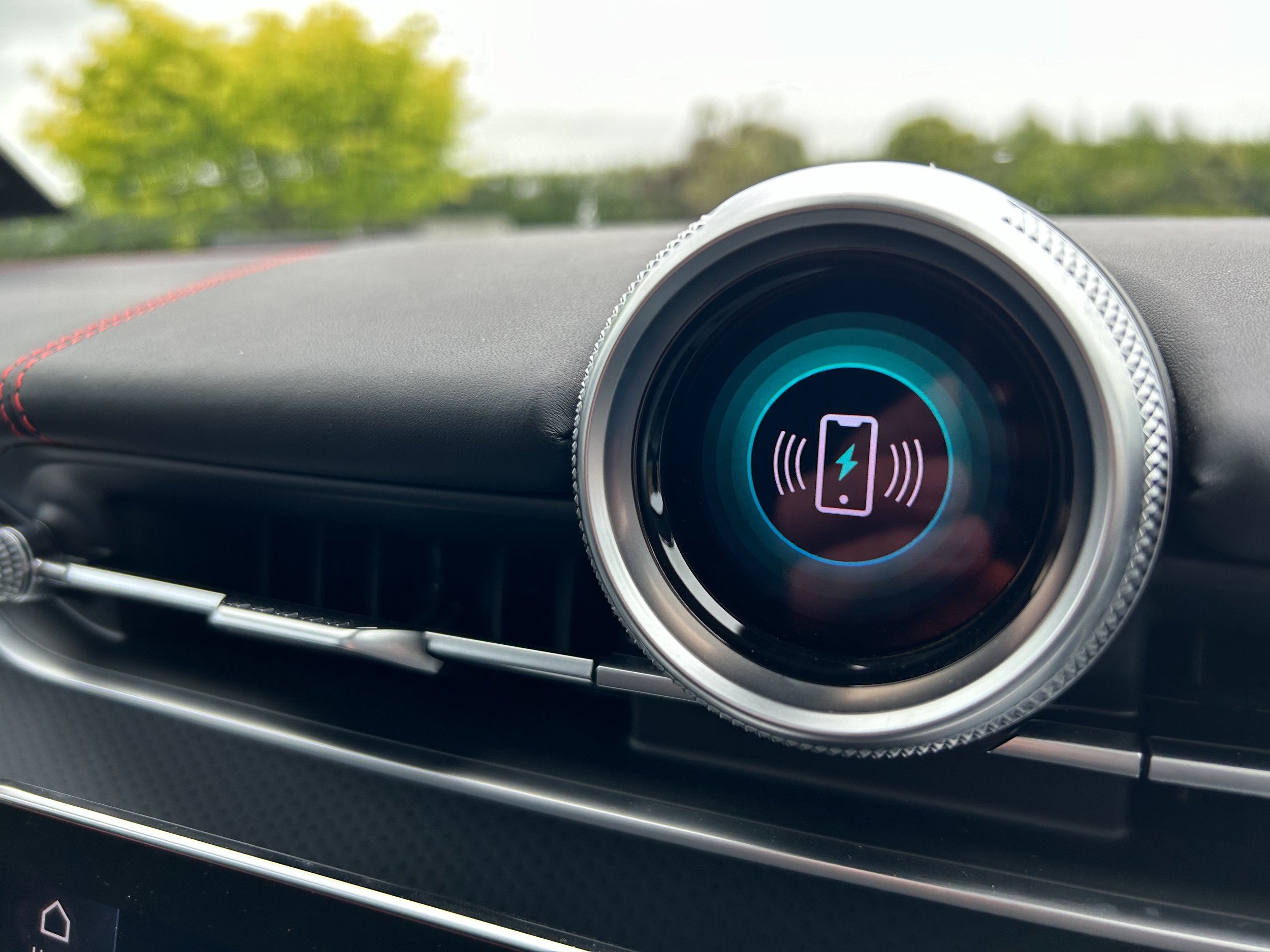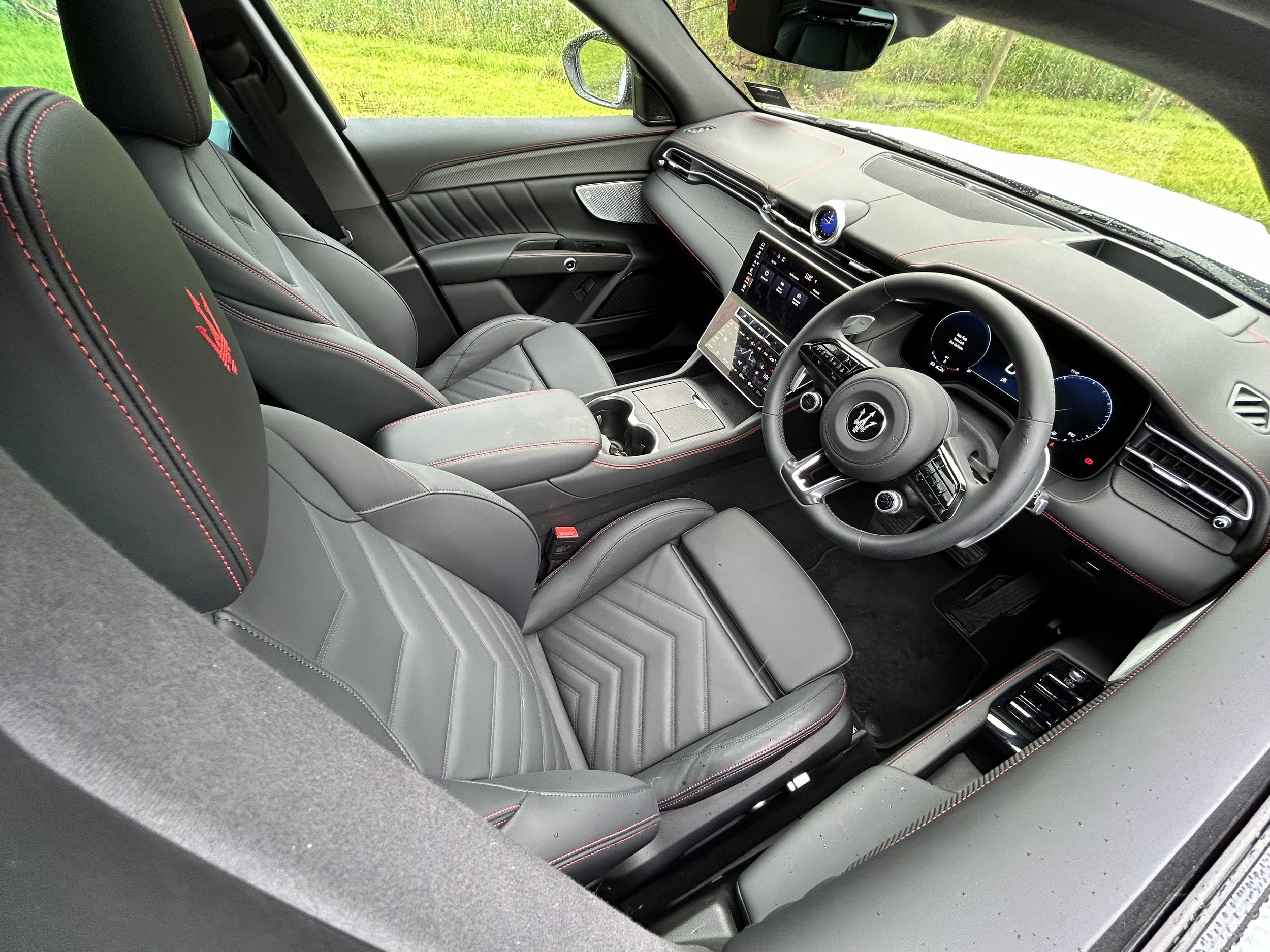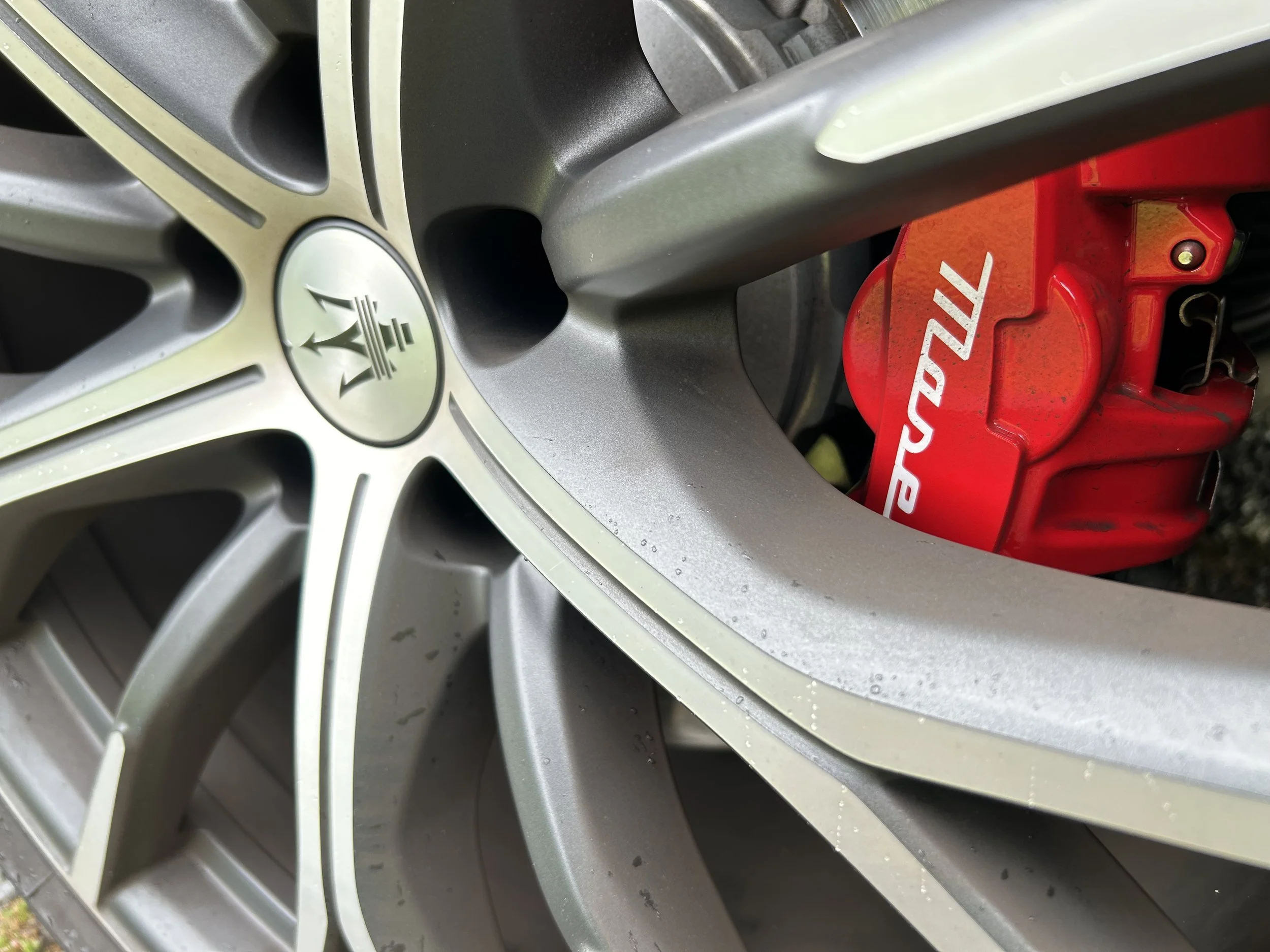Maserati Gregale Trofeo road test review: Trident true
/Sports utility practicalities but with crushing performance and a big dollop of couture.
Price: $180,000.
Powertrain: Twin turbocharged 3.0-litre V6 petrol, eight speed transmission, 390kW/620Nm.
How big: 4848mm long, 1948mm wide, 1670mm high, 2901mm wheelbase.
We like: Sensational engine, exhaust note, agile dynamics, feels driver-centric.
Not so much: Transmission selector and touchscreen control quirks.
“IT was exactly how I imagined how a proper Grand Prix car will be – and it did everything you would imagine a proper Grand Prix car would do.”
I’ve been lucky to have driven a number of Maseratis, not just on New Zealand and Australian roads but also on hallowed home turf. A sunny day in the GranCabrio, driving from the factory in Modena to a lunch in a hilltop village, and return. Life does not get any better.
Still, top of the Trident badge times was involving with what would be Chris Amon’s final driving acquaintance of the car that kicked off an illustrious international motorsport career.
The 250F stands as the last of the great world championship front-engined racers. Just 26 were built; so the one Amon raced is a priceless pride of the Southward Collection. The outing at the New Zealand Grand Prix meeting at Manfeild of 2010 was significant, made all the more special by how he drove it.
Hard to believe, the Bulls-born hero of Le Mans ‘66 with Ford, whose abilities were to be saluted by old man Ferrari himself, was just 17 when he first tackled a car made world-famous by his own hero, Fangio. Moreover, this brute was just Amon’s SECOND race car; the first being a much daintier Cooper.
Watching Michael Mann’s ‘Ferrari’, in which a 250F features, provides reminder that cars then were no less fast as many single seaters are today. They were just a lot less sophisticated and safe.
The Southward 250F came to Manfeild with a fresh engine and new tyres; the 2.5-litre wasn’t in full race tune (in heyday, that required special fuel that rotted clothing), yet those rears still never stood any chance. Steer by throttle. When competing, Amon became a consummate ‘drifter’ half a century before the skill became a sport in its own right.
On the demo day, when instruction ‘to take it easy’ and ‘just two laps’ … well, the sound, the sight! The whole place stood in salute. “The quickest way around a corner is to throw it into a big slide and hold it there on the power,” he chuckled afterward. Not having cameras on the car remains an enduring regret.
Term of loan meant that, when dropping by what is now Manfeild: Circuit Chris Amon, there was no taking Maserati’s latest beyond pit lane.
Badge, cylinder count. And no small amount of emotion. Those with sentiment will argue that’s enough to create at least a tie between the Grecale Trofeo and that legendary 250F.
Still, the F1 days are well gone and though Maserati still races, today the big effort is in Formula-E, to pave way for an electric road vehicle chapter. The Trofeo tag is slightly out of step with that, as it coins from a single-marque motorsport championship, started by Maserati Corse in 2003, with the introduction of the Maserati Coupe, a version of which was built for the series. But all that’s long defunct. So, as much there’s some ‘same’, there’s a lot of ‘different.’ But the world turns, right?
The great miracle, perhaps, is that Maserati has stayed the course. Such a tumultuous history; so many rises, falls and saves. So many owners. And, yet, the door has never quite closed.
Under Stellantis, sports cars are still built, but performance sports utilities are the volume thrust. That might not seem ‘right’ to old-schoolers, but accountants will see the sense. It’s the kind of vehicle we mainly buy.
Grecale is the second, following the physically larger but not much roomier Levante, born in the same year Amon left us, 2016. The newer is the most important. For now it’s in petrol, with levels named GT, Modena and Trofeo all featuring all-wheel drive and a choice of two engines. A Folgore branded electric version will follow this year.
Exotic, enthralling and expensive. That sums up the Trofeo. It’s the variant with the best of everything and one of the fastest compact SUVs I have ever experienced.
About the classification. It’s one of those SUVs that only loosely conforms. Though it has a mode for doing so, taking it off-road would be a crime.
No, this car is all about being flamboyant and exotic; about looking very good in all the best places. It’s different and interesting enough to do exactly what Maserati hopes it will, which has nothing to with mud and ruts and everything to do with the bottom line.
In respect to that …. even though it is the company's least expensive model here, there’s no avoiding that the sticker is not - cough - inconsiderable.
That entry GT is $120,000, Modena is $140,000 Modena and Trofeo adds another $40k, and that’s before enhancements. The example here was a $200k proposition. Yes, I know you can buy bigger Audis, Benzes and BMWs for that.
No sector is more heavily stocked than this one and not even something this exotic escapes from a degree of styling sameness. In silhouette at a distance, this car could be confused with a Mazda CX-5. Seen up close, a different story.
Maserati has implemented lots of cues that play the heritage card; not just for sake of past history but also because it knows it is a brand for which the right looks matter, given the company it will keep.
Still, imagine the challenge. SUVs are, by genre, more frumpy than the lean, svelte saloons, elegant GTs and beautiful sports cars it is better known for.
That Grecale is not just visually more interesting and arresting than anything German but is, from some angles - front on and the rear three quarter in particular - dead gorgeous speaks to Italian artisanship.
The nose is most unmistakably Maserati, but the firm's style carries into the overall silhouette. That long bonnet and reasonably slim window line also lend a nod to its sporting heritage. The rear lights? They more or less replicate those fitted to an important past car, the 3200 GT.
If not as unremittingly solid in feel as something like an Audi, the interior still feels classy. Everything swathed in leather that’s of a softer, more quality kind that seems only reserved for Italian cars. Trofeo also takes real carbon fibre, contrast stitching and dark materials. It’s a bit moody but sense of it being ‘crafted’ comes across, thanks to elements like the red Maserati badging stitched into the headrests.
Standard equipment includes a 12.3-inch digital instrument cluster, a 12.3-inch infotainment display, head-up display, a tri-zone climate control, which can be adjusted through an 8.8-inch touchscreen. A 'Fuoriserie' personalisation programme offers additional preset option packages.
Safety features including autonomous emergency braking, adaptive cruise control with stop and go, blind-spot monitoring, lane-keeping assistance, rear cross-traffic alert and driver fatigue monitoring.
Four in comfort, five at a squeeze. Headroom front and rear is so-so, and though it is a wide cabin, the poor person stuck on the middle of the back seat has to put up with a tall, wide transmission tunnel between their legs. The boot is big and has a flat load lip, the floor seems quite a long way off the deck.
The platform is shared with Jeep and so it gets the US cars’ electronic architecture. Maserati has effected chic cleverness as best as able - a good example is how the customisable clock at the top of the dash takes a classic design cue into a digital environment.
As whole, it’s an interesting blend. The Sonus faber auto is of astounding quality, but blue collar America’s influences still blemish nonetheless. Because it juts out towards the bottom of the main touchscreen, the smaller screen - which houses the climate controls is easy to brush your hand when using the main, and so accidentally change the temperature or volume settings. The digital graphics on the screens are small and fiddly, so it’s a bonus it has smartphone mirroring so you can switch to Apple CarPlay and leave it there to enjoy better mapping.
The oddest inheritance item is the transmission selector, which presents as buttons spanning the base of the centre console. And you thought only French brands did quirky? It’s in your face yet so easily overlooked newcomers might not twig to it. Good or bad? Nah, just different, though it undoubtedly is one reason why the forward part of the cabin has such generous storage space for phones, bottles and so on.
The thick-rimmed three-spoke steering wheel holds two circular dials, a representation taken from MC20. One controls the driving modes (Off Road, Comfort, GT and Sport, like in the standard Grecale, Corsa for the V6). The other is the engine starter button. Behind the wheel are paddle shifters. These being beautifully-rendered in actual metal reminds just how unashamedly driver-oriented this car is. In recognition the transmission buttons might be flummoxing in tight manoeuvres such as parking, it has engineered the left paddle shifter to engage Reverse and the right side one to operate Drive at walking speed.
In hindsight, the marketing department must be now kicking itself for decreeing Levante as being the 'Maserati of SUVs', because the statement that is off course meant to relate to how it drives probably applies more fittingly to the Grecale.
You know it’s going to be good from sliding in, because the driving position is where it really treats. There’s no way you cannot accomplish a spot-on seat-to-wheel-to-pedals siting; every version gets an electrically adjustable driver’s seat (including side bolsters and lumbar support) and steering wheel.
The driving position can be set low, yet still lending a very good view of everything around, and the seat itself is just right for sporty feel, which lends to the general sense of confidence this car lends when being driven in the Italian way.
The GT and Modena run a 2.0-litre turbocharged four-cylinder petrol engine with 48-volt mild-hybrid assistance, developing 221kW/450Nm at base, lifting to 242kW/450Nm in the higher-priced version, offering 0-100kmh times of 5.6 seconds and 5.3 seconds and able to smash 240kmh. Not slow, then.
Even so, they’re utterly out-sizzled by the Trofeo. It’s got the brand’s star powerplant, the the 3.0-litre 'Nettuno' twin-turbocharged V6 petrol. Yes the same engine that runs in the make’s ultimate product, the MC20 supercar. It’s detuned in the Trofeo but only slightly: 390kW and 620Nm are substantial outputs.
The 285kmh top speed was not validated on test. A standing start run in a suitable locale suggests the cited 0-100kmh time of 3.8 seconds is pukka. Acceleration up to a figure I won’t relate here was impressive.
Stomping with snarl rather than stump-pulling really is the speciality. Inasmuch as it has good torque which occurs at an accessible level of revs, this is an engine dedicated more to speed than caravan and boat hauling.
It likes to rev and while in ordinary driving it delivers its power in a wonderfully smooth, linear fashion; to encourage the full fury, slip it into Corsa mode and open it up, but with advisory this retires almost all the electronic assists.
While not spine-tinglingly thrilling as that open-piped 250F was, it nonetheless makes a great noise up front, overlaid with metallic roar from the quad exhausts. And nothing’s artificial: You and everyone else within a kilometre will hear it yowl.
Accompanying the soundtrack is feeling of decently brutal acceleration. Assuredly, there is very strong performance across all realistic road speeds. It gets under your skin. I’d like to think CAA would have approved.
With great power comes great responsibility. A bit of cliche, perhaps, but one Maserati engineers have taken heed of, because the chassis is excellent too. Body control impressive for a two- point-something tonne beast like this and the grip levels are of a high standard, allowing for keen turn-in and impressive cornering speeds.
The electrically assisted steering is better than most; you quickly find it’s accurate and consistent in its weighting, while the brakes are very good, biting quickly and cleanly and hauling the car down from speed easily.
Set into hand shift mode is the right thing to do. In that setting, the transmission is livelier, more involving and up for any kind of play; it’s sharp and smooth, never baulks and has a nice spread of ratios to make the most of the grunt.
As with almost all - actually, all - European performance SUVs, this one hankers for a nicer quality of road than we can provide.
Ride-wise, it’s far nicer on decent motorway tarmac than on coarse chip. It becomes extremely rigid if you put the dampers in their most intransigent mood. There’s virtually no yield, over even the smallest imperfections. The adaptive dampers can be controlled independently of the main drive modes, and chances are an owner will find it prudent to take time to work out what suits best.
As much as the optimal ride-handling formula is a bit of a spine-shaker, you’ll find it hard to resist as with that setting the engine is allowed to fully voice the snarling bark and bite that you expect.
An expensive bauble for a extravagant few? Of course it is, but that’s always been the Maserati way.
Expectation nonetheless is that a car that takes the name of a wind - a tradition going back to 1963 that in this instance a strong north-easterly that blows over the Mediterranean - will command 70 percent of annual volume could well translate to just a few dozen cars because, even among high-end brands, Maserati has been a select choice here.
Still, even though even the pricy end of the SUV cabinet is well-stocked, you can see how the Grecale should slip seamlessly in. As much as it does much he same as most other SUVs are practical level, there’s a ton of panache and the engine is a peach. It’s just different.
You might imagine it could rival the BMW X3 and the Alfa Romeo Stelvio, which comes out of the same factory in Cassino, Italy. The BMW X4, Range Rover Velar and Mercedes-Benz GLC Coupe might also be alternate considerations. Conceivably, the Porsche Macan is also going to be a barometer, and it could be Maserati’s big break that the current type is about to be retired after 10 years’ sale, with only an electric to replace it.
Those Macan types who prefer petrol and don’t mind the fuel bill could easily find this snap-crackle Trofeo as just the thing, though they best be quick.
Trofeo selling itself as an SUV with the soul of a supercar is a transition, too, as Maserati has determined to drop internal-combustion engines from its vehicle portfolio by 2030, with every model to be offered with an electric powertrain by 2025; these all having the Folgore (lightning) designation.
Grecale Folgore, coming mid-year, is clearly therefore an important car as well, and though electrics tend to be called soul-less, you can bet Maserati will bring some passion to their project.
As much as it is brand that has long had to fight to survive, it’s only of those marques you hope will never leave the scene. Too many good memories.























